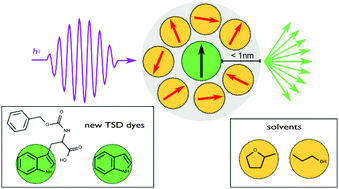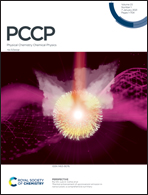Triplet state solvation dynamics: extending the accessible timescale by using indole as local probe
Abstract
Triplet state solvation dynamics (TSD) is a truly local measurement technique, where a dye molecule is dissolved as a probe at low concentration in a solvent. Depending on the dye molecule, local information on mechanical or dielectric solvation can be obtained. So far, this method has mainly been used to investigate topics such as fundamentals of glassy dynamics and confinement effects. Based on the procedure presented in [P. Weigl et al., Z. Phys. Chem., 2018, 232, 1017–1039] in the present contribution two new TSD probes, namely indole and its derivative cbz-tryptophan, are identified and characterized in detail. In particular, their longer phosphorescence lifetime allows for a significant extension of the timescale of local mechanical and dipolar solvation measurements. In combination with previously used dyes a measurement window of up to five orders of magnitude in time can be covered. Furthermore, we show that in cbz-tryptophan the indole unit is the phosphorescence center, while the rest of the molecule only slightly contributes to the solvation response function. The detailed understanding of these two new TSD probes presented in this work, will allow in depth investigations of solvation and the corresponding dynamics also for biologically relevant systems in the future.



 Please wait while we load your content...
Please wait while we load your content...